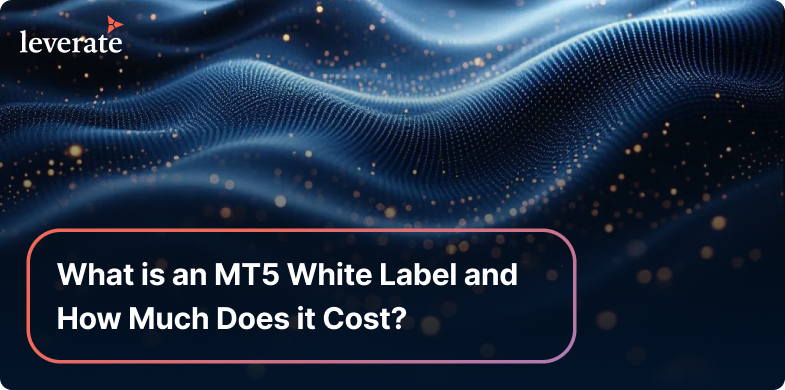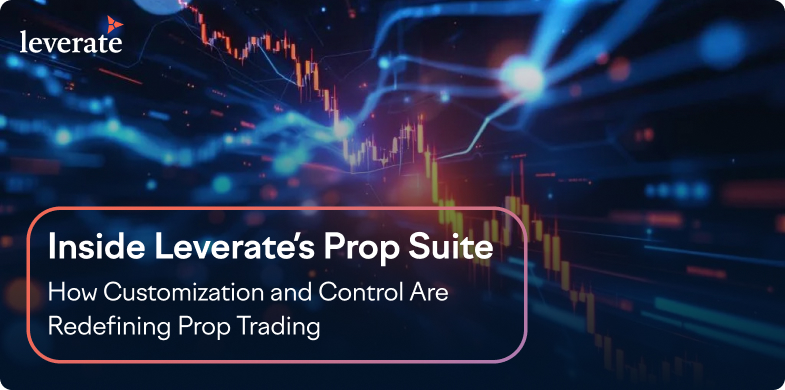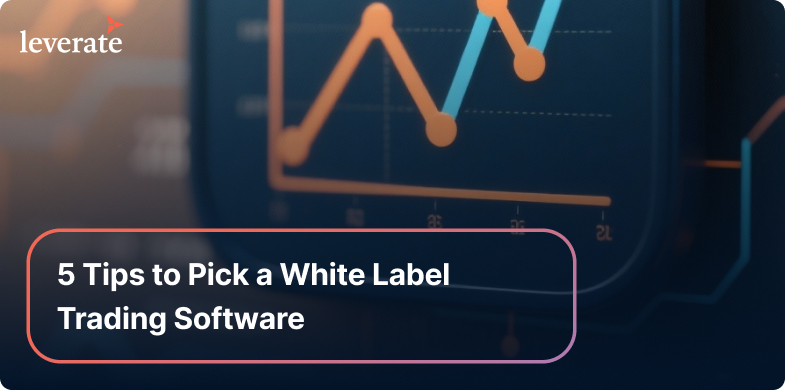
5 Tips to Pick a White Label Trading Software
Choosing a white label trading platform is one of the most consequential decisions a brokerage will make. Get it right, and you stand up a high-performing operation that scales, converts, and keeps traders engaged. Miss the mark, and you burn time, budget, and brand equity on a stack that can’t grow with you.
This guide is built as a practical buyer’s checklist, not generic fluff. You’ll get a concise definition, a quick look at the core benefits, and then a deep, no-nonsense walk-through of how to evaluate providers, contracts, roadmaps, and the hidden drivers of total cost of ownership (TCO). If you’re building or upgrading a white label forex broker or exploring a new white label brokerage platform, bookmark this.
What is a White Label Trading Platform?
A white label trading platform lets a brokerage launch under its own brand while a technology provider supplies the trading infrastructure, connectivity, risk tools, CRM integrations, and hosting. You own the brand and client relationship; your provider owns and maintains the platform.
The Benefits
- Speed to market: Launch in weeks, not months.
- Lower upfront cost: Avoid full-stack development and server licensing.
- Continuous upgrades: Access improvements without rebuilding.
- Focus on growth: Spend time on client acquisition and retention, not DevOps.

How to Choose a White Label Trading Platform Provider
Below are five tips (plus a bonus) to evaluate vendors like a pro. Use each tip as a decision gate in your RFP, demo calls, and contract reviews.
Tip 1: Match Platform Fit to Your Business Model, Not the Other Way Around
Every provider says they’re “flexible.” Test it.
Questions to ask:
- Instruments & venues: Do they support your current and near-term product mix (FX/CFD, indices, commodities, crypto, equities, copy trading, prop models)?
- Execution model: Can you mix A-Book/B-Book, adjust markups, and route dynamically by symbol, client segment, or time of day?
- Multi-brand & multi-region: Can the same stack run multiple brands, languages, and KYC flows under separate legal entities?
- Localization: Built-in localization for UI, notifications, onboarding, and content? (Not just “we can add later.”)
Red flags:
- “We can do that with a custom build” for basic needs like tiered pricing, symbol permissions, or tax residency logic.
- One-size-fits-all risk settings with no portfolio-level guardrails.
- A “partner” CRM that actually requires manual CSVs to stay in sync.
Outcome to aim for: A provider that aligns natively with how you price, route, segment, and scale, so operations don’t become a patchwork of workarounds.
Tip 2: Calculate Real TCO, Beyond the Sticker Price
Budgeting for a white label brokerage platform involves more than setup + monthly. Build a TCO model across 12–36 months:
Direct costs
- Setup: Platform branding, bridge connectivity, migration.
- Monthly license: Core platform + add-on modules (copy trading, prop features, advanced reporting).
- Liquidity & routing: Per-million fees, markups, or revenue share.
- CRM & KYC: Per-seat or tiered pricing, e-KYC vendor fees.
- Payments: PSP onboarding, FX conversion, chargeback handling.
- Data & storage: Audit logs, backups, archival access.
Indirect costs
- Ops burden: Manual tasks caused by missing automations.
- Downtime risk: Outage costs (lost trades, reputational damage).
- Vendor lock-in: Penalties or engineering costs to exit later.
- Compliance overhead: The cost of generating reports the platform doesn’t produce natively.
Pro move: Ask providers for a line-item price map for Year 1 and Year 2 with assumptions (MAU, monthly traded volume, ticket counts) and run scenarios. If a vendor can’t model it, they likely can’t manage it.
Tip 3: Demand Proof of Data Control, Portability, and Observability
Your brand is your moat, but your data is the castle. Treat it that way.
What to require:
- APIs for everything: Accounts, positions, orders, pricing, KYC states, marketing events, ledger entries.
- Event streaming: Real-time webhooks/Kafka/pub-sub so CRM, BI, and marketing automation get instant signals (deposits, withdrawals, KYC approved, trade closed).
- Raw data access: Ability to export full-fidelity data (not just canned reports).
- Audit & reconciliation: Immutable logs, versioned configs, and reconciliation tools across OMS ↔ CRM ↔ payments ↔ liquidity.
- Data residency & ownership: Clear clauses that your brokerage owns client and trade data; confirmed hosting locations for regulated markets.
Ask to see:
- Live API docs (not a PDF), sample requests, rate limits, error codes, and real postman collections.
- A demo that shows a real-time event flowing into your CRM/automation tool in seconds, not hours.
Tip 4: Inspect Compliance, Security, and Uptime Like a Regulator Would
Compliance isn’t a feature; it’s the foundation.
Controls to verify:
- KYC/AML: Native workflows, sanctions screening integrations, source-of-funds flags, and change logs.
- Permissions & SSO: Role-based access, MFA, granular scopes for staff, partners, and IBs.
- Segregation: Clear segregation of client funds at the data layer and reporting layer (even if you’re not currently regulated).
- Reporting: Trade blotter, P&L, best-execution evidence, negative balance reports, and time-stamped configs.
- Pen tests & certs: Routine third-party penetration tests, SOC2/ISO27001 posture (or equivalent), incident response protocols.
- Uptime transparency: Public status page, historical logs, RTO/RPO metrics, and real SLAs with credits.
Tip 5: Prioritize Growth Features That Compound Results
You’re not buying a platform; you’re buying compounding effects: better conversion, higher retention, greater LTV.
Capabilities that compound:
- CRM-native journeys: Auto-segment by trader behavior (first deposit, margin call risk, lapsed logins) and launch targeted lifecycle campaigns.
- Omnichannel messaging: Email + in-app + push + WhatsApp/Telegram connectors with multilingual templates and real-time personalization.
- Branding at scale: Centralized control for logos, icons, PWA title/description, and localized UIs, ship rebrands in minutes, not sprints.
- Prop features (if applicable): Evaluation phases, payouts, leaderboards, pass/fail automations.
- Copy/social trading: Curated signal marketplaces with risk caps and transparent performance data.
- Analytics & risk: Per-symbol profitability, toxic flow detection, exposure dashboards, and auto-hedging hooks to LPs.
- Marketplace & APIs: Ecosystem of prebuilt integrations (PSPs, KYC, marketing automation, affiliate tracking), plus open APIs for your secret sauce.
Ask vendors: What growth features did you ship in the last 90 days? What’s planned for the next 90? Growth is a habit, not a pledge.
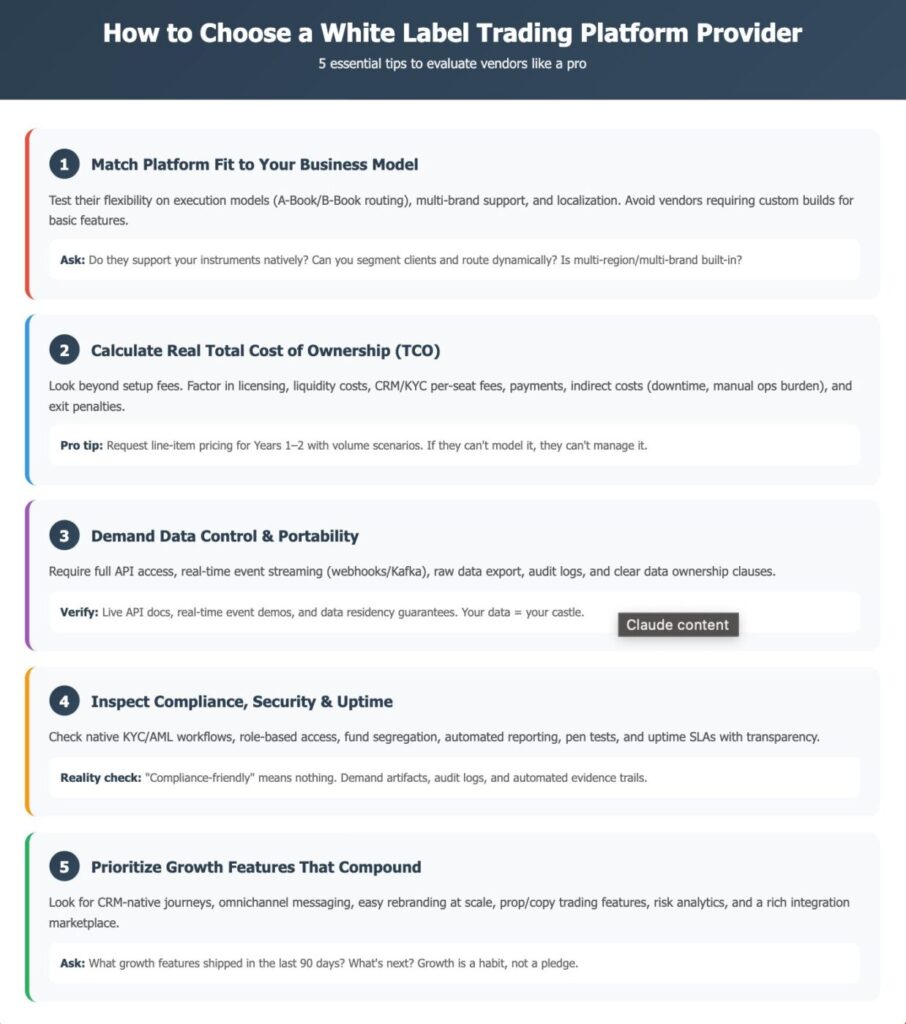
Bonus Tip: Test Migration Path and Exit Terms Before You Sign
Lock-in sneaks up later, during migration.
Checklist:
- Real World Simulation: Can you model your real routing and risk configs pre-go-live?
- Migration tooling: Bulk user import with hashed PII handling, balance/position migration, and symbol mapping.
- Rollback plan: A documented, timed rollback if go-live KPIs are missed.
- Exit clauses: Data export formats, termination window, and fee caps. If it’s vague now, it’ll be painful later.
Conclusion
A strong white label trading platform should feel like an operating system for growth, letting you orchestrate pricing, risk, onboarding, and engagement from one place, while giving you the data and tools to scale intelligently. Evaluate providers with ruthless clarity: business-model fit, real TCO, data control, compliance posture, reliability, and a roadmap that ships value every quarter.
If you want an all-in-one white label trading platform that checks those boxes without enterprise-grade sticker shock, consider Leverate’s white label trading platform. It’s a compelling substitute for the more expensive “big-name” stacks, delivering the features that matter for forex brokers:
- Fast launch & migration: Go live in weeks with guided setup and bulk import tools.
- Deep branding control: Multilingual UI, in-app messaging, and PWA title/description so your brand shows up consistently across web, app, and social previews.
- Liquidity & risk: Connectivity to leading LPs, smart routing, exposure dashboards, and configurable A-/B-Book rules.
- CRM & automation: Native integrations for KYC/AML, segmentation, affiliate tracking, and omnichannel journeys (email, in-app messages, push).
- Scalability: Multi-brand, multi-region, and multi-entity support with centralized governance.
- APIs & data freedom: Real-time event streaming and exportable reports so you own the numbers that power your growth.
In short: the Leverate white label brokerage platform gives you the muscle of an enterprise solution, without the enterprise price tag, so you can out-execute competitors and put your growth playbook on repeat.
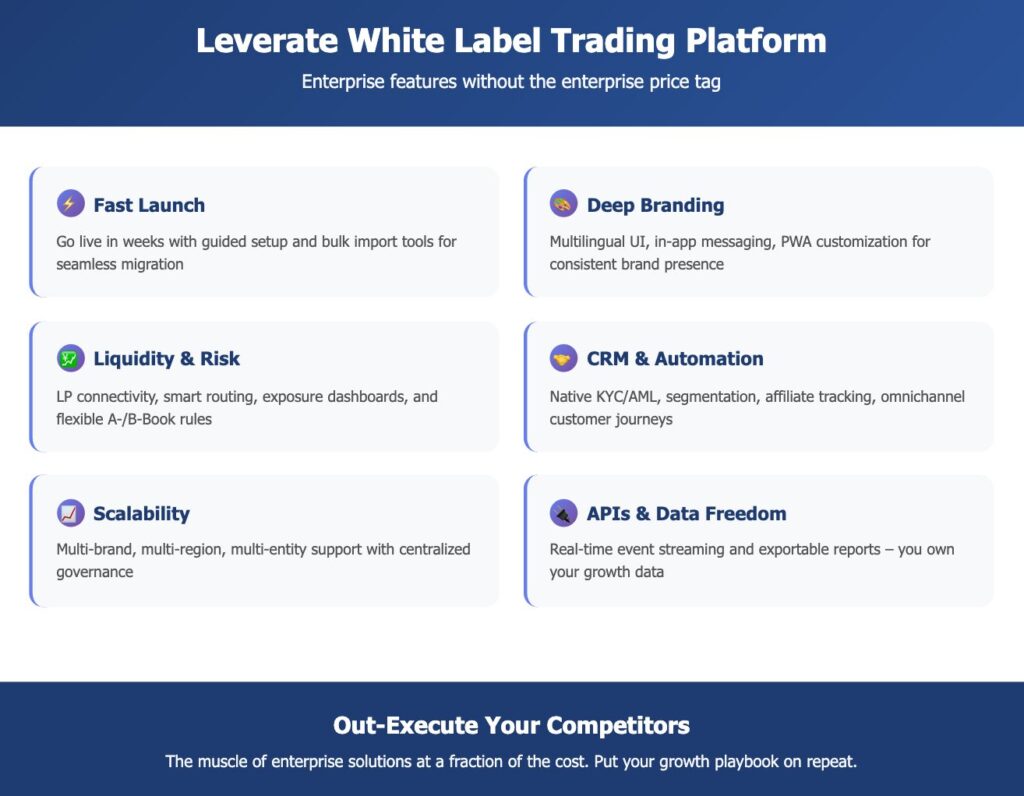
FAQs: Leverate White Label Trading Platform
Is it difficult to customize the look and feel of a white label platform?
Not with Leverate. Our white label trading platform gives you full creative control, customize logos, color palettes, typography, multilingual content, and even Progressive Web App (PWA) elements like site title and description, all from a centralized branding console. No coding, no tickets, no delays.
What is a white label trading platform?
A white label trading platform from Leverate is a turnkey, ready-to-launch brokerage solution that you can fully brand as your own. We handle the hosting, maintenance, execution connectivity, liquidity, and system upgrades, while you maintain control over your brand, pricing, risk, and client relationships, allowing you to focus on growth instead of infrastructure.
What does a white label trading platform cost?
Leverate provides flexible pricing that aligns with your growth strategy. Our costs are structured around a monthly fixed fee, which includes the basic generic package: SIRIX WebTrader and Mobile APP, CRM, Client Portal, Liquidity, and Hosting.
There might be additional variable costs for customized services like a KYC verification platform, an All-in-one Solution to Manage Affiliates and IBs, a Customer auto engagement platform, a Risk Management platform, and more
Our focus is on long-term growth, not just starting. Therefore, we highly recommend developing a Total Cost of Ownership (TCO) plan spanning 12 to 36 months to ensure your financial model is realistic and scalable.

